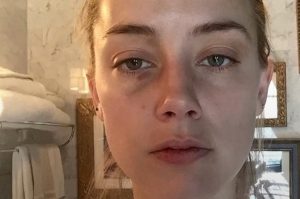 Living under prolonged stress, our nervous system forces us to react defensively to everyday challenges. Instead of the cycle of being stressed and then relaxing, we experience inflexible reactivity. We tend to respond in the same dysfunctional way. But why?
Living under prolonged stress, our nervous system forces us to react defensively to everyday challenges. Instead of the cycle of being stressed and then relaxing, we experience inflexible reactivity. We tend to respond in the same dysfunctional way. But why?
Inflexible reactivity is persistent, heading straight into intense stress reactivity, no matter the situation.
How the nervous system positions itself depends on three factors:
Genetics
Childhood trauma/ childhood conditioning
Present environment and lifestyle.

Firstly, highly sensitive people might be that way due to millions of years of evolution.
Evolution favoured individuals who were cautious and constantly scanned for danger—so they were not some animal dinner and could pass on their genetic material.
Secondly, during childhood, some people might experience high levels of stress, which wired the nervous system to scan for danger constantly and then respond to minor triggers as if there were tigers in a room ready to attack.
In psychology, we call it having a narrow window of tolerance and very high vagal nerve tone.
For example, most people who visit a new restaurant rate their stress level as low. For those with a narrow tolerance window, this experience might trigger very high-stress levels due to the unpredictability of the place, menu, etc.
Finally, our environment might trigger our responses by being overly stimulating and dangerous.
The reality of a new job, having a small child, separation from the spouse, and challenging work responsibilities might put us into a very narrow window of tolerance.
When your body (and the lizard brain responsible for survival) register safety, the nervous system is encouraged to run like a perfect factory. Your chest will likely feel relaxed and open. Breathing is easy, and breaths are full. The digestive system happily does its job: digesting, extracting nutrients, and comfortably eliminating. Eyes function well and accurately see the soundings, the mouth is comfortably moist, and the food tastes good. Body temperature is even and comfortable, and muscles are relaxed when adjusting appropriately to the current environment.
When the nervous system registers a threat, we can enter two modes of defence: hyperactivation and hypoactivation. I call these zones red for hyperactivation and blue for hypoactivation.

Red zone: your body tries to shoot down all unnecessary systems that are not vital for survival, like digestion, reproduction, biological immunity, etc.
All the blood is pumped away from the major organs to the muscles. There is much adrenaline produced and secreted into the bloodstream. Your blood pressure is rising. Because the heart wants to pump blood faster to give you more energy, you might feel heart palpitation; your breath will become short and shallow. Since blood is away from the digestive system and all enzymes are stopped, you might feel a dry mouth and an upset stomach, diarrhoea or constipation. The brain drowns in adrenaline, so thoughts become very fast and frantic. You are unable to focus, use logic, remember and learn.
In about two minutes, you are transformed into a lean, mean fighting machine. You feel angry, powerful and entirely out of control.
Blue zone: it might happened due to two instances. Firstly, you might be in the red zone for too long, and your body will suddenly freeze, dissociate, and collapse.
Secondly, it might be your natural defence mechanism learned from the past. Your nervous system knows that stress is always so overwhelming that fighting or running away is futile.
Your nervous system wants to freeze and collapse.
In the blue zone, you breathe too slowly or infrequently. You are cold and not producing enough body heat, your muscles feel tired and slackened, and energy is nowhere to be found. You cannot find any motivating thoughts—your mind feels empty and numb. You might feel out of your body, just floating above. The appetite is gone, and nothing tastes like it used to. You would like to go to bed and hide, but when you do, the feelings of guilt and shame are overwhelming.
The first step is to recognise your current state and use the right tools to regulate your nervous system.
What zone are you in now?
| Red zone | Blue zone |
| Speedy | Feeling slow |
| Aggressive | Passive |
| Restless | Avoiding responsibilities |
| Quick-fire problem solving | Unable to focus |
| Hyperfocused but also distracted by incoming ideas | Problems with memory and attention |
| Sweating | Feeling cold |
| Hyperventilation | Lack of appetite |
| Tight chest | Muscle pains |
| A lot of energy in arms and back | Lack of motivation |
| Racing thoughts | Numbness |






















 We have four aspects of attention.
We have four aspects of attention. Which aspect of attention do you have an issue with, and how to improve it?
Which aspect of attention do you have an issue with, and how to improve it?




 about developing and maintaining habits. It will give you some ideas if you need help with executive function, especially starting tasks, switching, stopping, and starting again. My ADHD clients tested many methods, and the most effective seem to be the ones mentioned.
about developing and maintaining habits. It will give you some ideas if you need help with executive function, especially starting tasks, switching, stopping, and starting again. My ADHD clients tested many methods, and the most effective seem to be the ones mentioned.